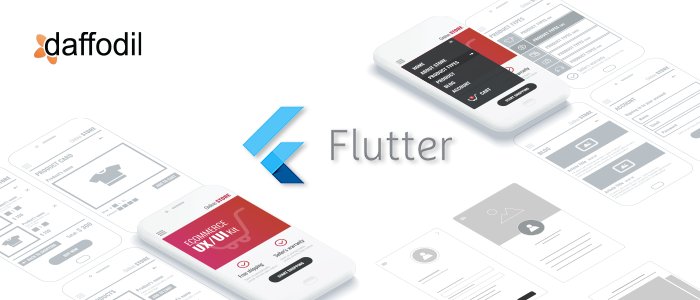
The mobile app development world is fast-paced, competitive, and time-driven. The developers’ community is on a constant lookout for new tools, frameworks, and libraries that can help them keep up with ever-growing, agile business requirements.
Understanding this, several tech-giants are coming up with toolkits that simplify mobile app development. Flutter by Google is one such promising framework that aims to ease cross-platform app development.
Flutter is a mobile UI framework, first introduced by Google in its I/O event in 2017. It’s first stable release was out for developers at the Flutter Live event in 2018 and since then it is one of the sought-after toolkits for building app UIs. Today, leading brands such as Google Ads, Alibaba Group, EMAAR, Philips, Grab, Hamilton are entrusting Flutter for building an intuitive app interface.
What is Flutter?
Flutter is an open-source, free mobile UI framework. It’s a platform to build ‘Create Once, Use Anywhere’ UI components, i.e. a codebase can be used to create a frontend for multiple platforms (Android and iOS). Flutter comprises of two prime components:
A Software Development Kit: The SDK has a collection of tools that helps in developing the application such as tools for compiling the code into native machine code (Android and iOS code).
A Framework with UI Library: It’s a collection of reusable UI components (sliders, buttons, text inputs, etc.) that helps in building the app with less time-to-market.
Flutter is written in C, C++, Dart, and Skia Graphic Engine. To develop apps with Flutter, Dart programming language is used. Dart is an object-oriented programming language, introduced by Google in 2011. Dart is simple to learn for programmers who have hand-on Java and C# programming language.
Why Flutter for Mobile App Development?
1. Cross-Platform App Development
One of the prime advantages of Flutter is it enables the developers to write the code once, compile it, and use it for multiple platforms. Currently, Flutter supports using a single codebase for Android and iOS development. However, Flutter will soon support web and desktop development as well.
Google has announced the tech preview release of Flutter for web. For web, Flutter is envisioned to provide a number of advantages, which includes:
Flutter enables the existing mobile apps to be packaged as Progressive Web App (PWA). This makes an app reach out to a wider variety of devices.
Flutter allows creating and embedding dynamic UI components to existing web applications.
Flutter also comes with Desktop Support using which a Flutter source code can be compiled to native Mac OS desktop app. Also, Flutter is said to support Google’s proprietary OS- Fuchsia in the coming time. Overall, Flutter is going to be a big deal for building cross-platform apps for mobile, web, and desktop.
2. Faster Time to Market
Flutter comes with an advantage called Hot Loading which helps to accelerate the development cycle. Instead of recompiling the app after any changes in the code, the developers can view the changes on emulators only. Therefore, all those minutes that are spent on waiting for app rebuilding can be productively utilized by the developers, thereby boosting the app development cycle.
Also, the apps built using Flutter take less time for quality assurance. Since a code tested on one platform doesn’t need testing for another, Flutter saves around 50% of the testing time and thus ensures a faster time-to-market of the app.
3. Build Versatile Apps
Flutter has a collection of built-in widgets that are combined to build an app. This proprietary set of widgets can be customized for building UI blocks. Flutter widgets have got an attentiveness to visual details and that is why it is used by some of the major brands for app development.
Moreover, Flutter is used for building apps in various domains. Education, entertainment, utility, eCommerce, social, health & fitness are some of the domains wherein Flutter has been trusted for impressive UI. Check out this list of some amazing apps built using Flutter.
4. Performance-Oriented Apps
Flutter uses Dart programming language which makes it easier for developers to create animations and transitions that run at 60 frames per second. Also, Dart can do object allocation and garbage collection without locks.
Since Flutter apps are compiled to native code directly, they do not require any bridge between the UI components and programming language. That is why an app built using Flutter has better performance.
5. Competitive Advantage
Flutter is often compared with React Native, which is a javascript based framework for building mobile app UI. However, there are some noticeable differences between the two frameworks. Here is how React Native differs from Flutter. Flutter gives an edge to mobile app development in terms of performance, looks & feel of the UI components, and can be used for web and desktop development as well.
Planning Mobile App Development with Flutter?
Flutter has some amazing benefits to cross-platform mobile app development. If a mobile app for Android and iOS platforms is on your business roadmap, then choosing Flutter for UI development can be a great decision. You can learn more about our Flutter development services or schedule a 30-minute free consultation to get started.



